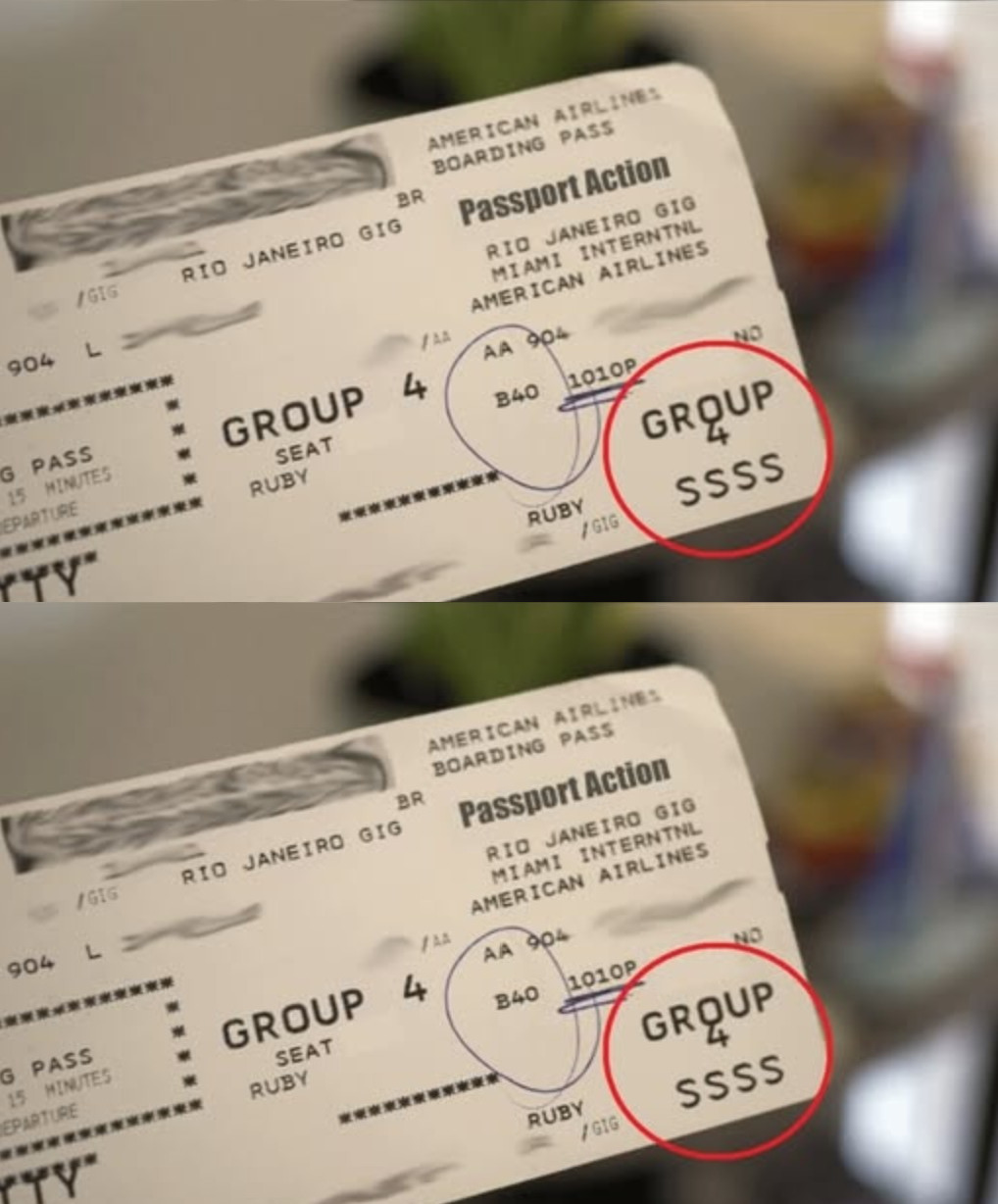Air travel, while often a convenient means of transportation, can also be a source of stress for many travelers. From organizing itineraries and ensuring timely arrivals to navigating bustling airports, numerous factors can contribute to a heightened sense of anxiety. Amidst these challenges, encountering unexpected security procedures can further exacerbate the situation. One such scenario involves noticing the code “SSSS” on your boarding pass—a designation that may not be familiar to all passengers but holds significant implications for the security screening process.

Understanding ‘SSSS’ on Your Boarding Pass
The acronym “SSSS” stands for Secondary Security Screening Selection. This marker indicates that a passenger has been selected for additional security checks by the Transportation Security Administration (TSA). Such screenings are part of TSA’s efforts to enhance aviation security by identifying individuals who may require closer examination before boarding.
Reasons for Selection
Several factors can lead to a passenger receiving the “SSSS” designation on their boarding pass:
-
Random Selection: TSA employs random selection methods to ensure unpredictability in their security protocols, meaning any passenger can be chosen without specific cause.
-
Travel Patterns: Unusual travel behaviors, such as purchasing one-way tickets, making last-minute bookings, or frequent travel to certain destinations, can trigger additional scrutiny.
-
Watchlist Matching: Names that closely match those on government watchlists may result in a passenger being flagged for extra screening.
-
Payment Methods: Transactions made using cash or other unconventional payment methods for ticket purchases can raise red flags.
It’s important to note that while these factors can increase the likelihood of selection, the exact criteria used by TSA are not publicly disclosed to maintain the integrity of security measures.
What to Expect During Secondary Screening
If your boarding pass is marked with “SSSS,” anticipate a more thorough security process, which may include:
-
Comprehensive Pat-Downs: Security personnel may conduct detailed physical inspections to ensure no prohibited items are present.
-
Luggage Examination: Both carry-on and checked baggage might undergo meticulous searches, including swabbing for explosive residues
-
Electronic Device Checks: Devices such as laptops and smartphones could be inspected more closely, and you may be asked to power them on.
-
Personal Questioning: Officers might ask additional questions regarding your travel plans and purpose to assess any potential risks.
These procedures are designed to ensure the safety of all passengers and typically add extra time to the security process.
Impact on Your Travel Experience
Being selected for secondary screening can lead to delays and increased stress. Passengers have reported spending an additional 15 to 45 minutes undergoing these procedures, depending on the airport and specific circumstances. It’s advisable to arrive at the airport earlier than usual if you suspect you might be subjected to enhanced screening to accommodate any potential delays.
Steps to Mitigate Future Selections
While there’s no guaranteed method to avoid secondary screening, certain measures may reduce the likelihood:
-
Consistent Travel Information: Ensure that your personal details are entered consistently across all travel documents and bookings to prevent mismatches that could trigger additional screening.
-
Secure Flight Program: Participate in TSA’s Secure Flight program by providing accurate information during booking, which helps in identifying low-risk passengers.
-
Redress Process: If you believe you’ve been repeatedly subjected to unnecessary screenings, consider applying for a redress number through the Department of Homeland Security’s Traveler Redress Inquiry Program (DHS TRIP). This process can help resolve issues arising from watchlist misidentifications.
Conclusion
Encountering the “SSSS” code on your boarding pass signifies a requirement for additional security screening—a process implemented to maintain the safety and security of air travel. Understanding the reasons behind this selection and knowing what to expect can help alleviate some of the stress associated with the experience. By staying informed and prepared, you can navigate these procedures more smoothly, ensuring that your journey remains as pleasant and hassle-free as possible.





